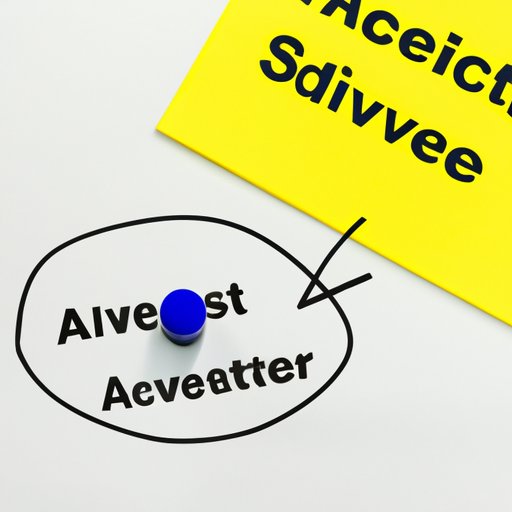Introduction
When it comes to writing, the use of active voice can significantly enhance the effectiveness and quality of your work. In contrast to passive voice, which can weaken the impact of your sentences, active voice provides a more succinct and engaging writing style. In this article, we will explore the differences between active and passive voice, the benefits of using active voice in your writing, and how to identify and transform passive sentences into active ones.
8 Examples of Sentences in Active Voice and How to Identify Them
A sentence is considered to be in active voice if the subject performs an action directly. For example, “John kicked the ball” is in the active voice because John is performing the action directly. In contrast, “The ball was kicked by John” is in the passive voice because the action is being done to the subject instead of the subject itself performing the action. Here are some examples of active voice sentences in different tenses:
– Present tense: “She teaches English to foreign students.”
– Past tense: “The CEO presented the new product yesterday.”
– Future tense: “We will deliver the package tomorrow.”
To identify active voice in a sentence, look for the subject performing the action directly. For example, in the sentence “The dog chased the cat,” the subject (dog) is doing the action (chasing) directly.

Mastering Active Voice: Spotting the Subject and Verb in a Sentence
In order to identify active voice, it is important to locate the subject and verb in a sentence. The subject is the noun performing the action, and the verb is the action being performed. For example, in the sentence “She ate the apple,” the subject is “she” and the verb is “ate.”
It is also important to ensure subject-verb agreement in active voice sentences. This means that the verb must be written to agree with the subject in number. For example, “He runs” is correct, but “He run” is not.
Passive vs Active Voice: Why Active Voice is More Effective
Passive voice is often used when there is no clear subject or when the speaker wants to obscure the subject’s identity. However, using passive voice too often can make your writing less engaging and weaken the impact of your sentences. In contrast, active voice provides a clear and concise writing style that is more engaging and persuasive. For example, compare the passive sentence “The book was read by the student” to the active sentence “The student read the book.” The active sentence provides a clearer and more engaging image of the action.
Active is Better: The Benefits of Writing in Active Voice
Using active voice in your writing can provide a range of benefits, such as making your sentences more vivid and engaging, creating a more persuasive writing style, and increasing the readability of your work. In addition, active voice can help build credibility and authority with your readers. For example, it can make your instructions and explanations more clear and easy to follow. Using active voice in different genres, such as academic writing, can also aid in achieving specific goals like explaining concepts and developing arguments.
Revamp Your Writing: Transforming Passive Sentences into Active Voice
Transforming passive sentences into active voice can be achieved by identifying the subject and verb in the sentence and rewording the sentence to ensure the subject is performing the action directly. For example, changing “The cake was baked by my sister” to “My sister baked the cake” provides a clearer image of who is doing the action.
Using active voice can also involve varying the structure of your sentences and incorporating strong verbs. For example, instead of writing “She was angry,” use the more descriptive and active “She seethed with anger.”
How to Avoid Common Grammar Pitfalls: Understanding Active and Passive Voice
One of the most common mistakes in grammar is improper use of active and passive voice. Passive voice can often be avoided by identifying the subject and ensuring it is performing the action directly. It is important to pay attention to your writing and identify any signals of passive voice, such as the use of “by” phrases.
Grammar tools and resources, such as Grammarly and Hemingway Editor, can also help writers identify and correct any passive or passive voice errors in their writing.
Conclusion
Using active voice in your writing can enhance the effectiveness and quality of your sentences, making them more engaging and persuasive. Identifying and transforming passive sentences into active ones can be achieved by pinpointing the subject and verb, and ensuring the subject is performing the action directly. By mastering active voice, writers can create more effective and powerful writing that captures the attention of their audience.
